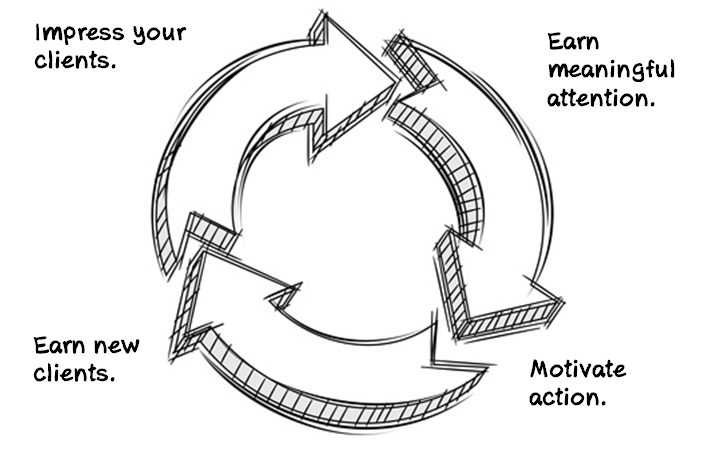Many of our new clients should come from referrals. This is not new. What is new is the way we are able to engage with referral sources.
Somewhere along the way, many lawyers picked up this idea that the web is somehow a replacement for traditional notions of client development. Interestingly, other have concluded that the internet is largely a waste of time and doesn’t really have any role in client development at all. Both views are rather silly.
Pitting reputation and relationships against the web is just dumb.
Whether you know it or like it, people will look you up online. Even people you know in the real world.
It’s a fact of digital life.
If you don’t build a reputation for competence, professionalism and service, the web will eventually reflect that too.
It all works together.
Engage with Current and Former Clients Online
To me, one of the biggest mistakes plaintiffs’ lawyers make is to think of their relationships with clients as limited to the period in which they provide their legal services. In other words, when the case is over, the relationship stops.
I’m going to paint with some pretty broad strokes here. Hopefully, it’s obvious to you that there are situations in which maintaining a relationship and engaging with both former and current clients online is a bad idea.
Use your head. But don’t be paralyzed by your professional obligations.
Assuming there aren’t reasons to avoid contact with clients online, engage with them! Sounds pretty simple.
However, by engage, I don’t mean advertise. A better word might be socialize. But really, engage is better.
First, decide where the best place(s) is to connect. Is it Facebook? Is it LinkedIn?
The nature of your relationship should play a role in informing where and how you connect with clients.
Client relationships that have been solidified over time lend themselves to more personal connecting and sharing online.
Interestingly, the web provides a medium that works really well for maintaining professional relationships between plaintiffs’ lawyers and their clients beyond merely the period of representation.
It provides an efficient way to stay in touch over time. And sometimes, staying in touch is the most important part of maintaining a relationship with a client that transitions into a referral.
Engage with Colleagues Online
This one has always seemed like a no-brainer. The web is particularly useful for maintaining relationships with colleagues. This is especially true if your professional network extends over large geographical distances.
Lawyers are a busy bunch. It’s difficult to make time for a lunch, let alone, a networking event or trip.
Fortunately, you can stay in contact with key professional contacts on an almost daily basis with online social networks. And you can do it in only minutes a day from your smartphone.
This is powerful stuff.
Engage with Related Communities Online
This one might not be as obvious to you.
Let’s suppose that your target client audience is injury victims. What other groups to these folks touch?
Groups and organizations for people dealing with similar injuries?
Whether it’s volunteering, sponsoring or serving in another capacity, being involved in the same communities as your clients and potential clients is a tried and true method for gaining referrals. And many of these communities will have their own web presences.
That might mean online forums, blogs, Facebook pages, LinkedIn groups, etc.
And just like you participate in these communities in the real world, it can be worthwhile to stay engaged online too.
Don’t get tunnel vision with your online activities. Too many plaintiffs’ lawyers hyper-focus on the narrow view of trying to connect with clients.
Online engagement is much more than merely direct response marketing.




